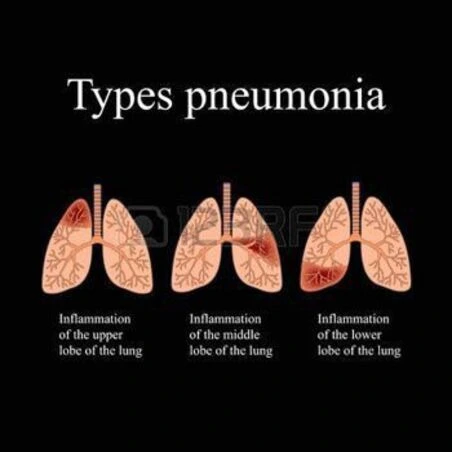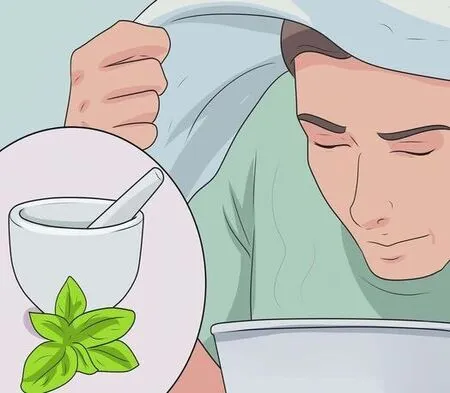INTRODUCTION
Milder symptoms but more contagious--
What’s becoming clearer, however, is that omicron, while highly contagious, appears to cause more mild, cold-like symptoms. “Many people are presenting with a sore throat, nasal congestion, headache, muscle aches.
 |
| BRONCHITIS PNEUMONIA CHANGE AGEING |
BRONCHITIS PNEUMONIA CHANGE AGEING
Authorizes second booster shot--
The U.S. Food and Drug Administration (FDA) has given the green light for people age 50 and older to get a second COVID-19 booster shot and the Centers for Disease Control (CDC) has agreed and updated its vaccine recommendations. “Emerging evidence suggests that a second booster dose of an mRNA COVID-19 vaccine improves protection against severe COVID-19 and is not associated with new safety concerns.
BRONCHITIS PNEUMONIA CHANGE AGEING;-Whenever the word 'bacteria' is mentioned, most people will think about it negatively. The truth is there are bad bacteria as well as good bacteria. Bad bacteria often cause illnesses or diseases, and the good ones help in keeping the body healthy. Did you know that the largest class of all creatures on earth is bacteria? They are single cells that eat and reproduce. Of all infecting agents, bacteria are the most common cause of hospitalized illnesses and infections, especially in developing countries. To protect yourself against bacterial pneumonia, there are two pneumonia vaccines recommended if you're 65 or older. If you have underlying health problems, like COPD or diabetes, or if you smoke, you will likely need one at an earlier age{1}.
An antibiotic isn’t always the answer--
antibiotic USE can easily be stopped. In the case of bronchitis, it is most commonly caused by viruses- acute or chronic bronchitis. Bacteria though can also cause bronchitis, but cases like this are not that common. Bronchitis is the irritation and inflammation of the respiratory passages. Though many of the signs may be similar, pneumonia is much more serious than acute bronchitis. It's more often caused by bacteria than by a virus.
REMEMBER--Most Common Symptoms of COVID-19--
People with COVID-19 report a wide range of symptoms. The most prevalent are:
Fever or chills
Cough
Shortness of breath or difficulty breathing
Fatigue
Muscle or body aches
Headache
Net loss of taste or smell
Sore throat
Congestion or runny nose
Nausea or vomiting
Diarrhoea
Bronchitis AND Pneumonia
Both affect the lungs and share some common symptoms, but they are different diseases that require different treatment. Here's how you can tell the difference. The most common symptoms of bronchitis include:
 |
| TYPES OF LUNGS INFECTION |
TYPES OF LUNGS INFECTION
Coughing with clear, yellow or green sputum (the gunk you cough up)1-Fatigue 2-Wheezing 3-Runny, stuffy nose occurring before chest congestion begins 4-Shortness of breath, usually following a coughing jag 5-Discomfort in the centre of the chest due to cough 6-Mild fever
Inflammation of the lungs, pneumonia has many of the same symptoms as bronchitis, including Persistent fever (often high) Cough
Often with yellow or green mucus
Chills, which sometimes cause shaking
Shortness of breath Sharp chest pain
Confusion (which occurs primarily in older people)
If you're experiencing a persistent cough, perhaps you need to consult a doctor because you might have bronchitis. Although this is just a mild to moderate illness, it needs proper treatment to avoid any complications and secondary bacterial infections. If bronchitis is caused by bacteria Antibiotic is the best treatment.
Disease among children and adults--
There are a lot of bacteria that cause illnesses and diseases. Bronchitis is a very common disease among children. Older people do worse with respiratory infections (whether viral or bacterial), especially if they have other health problems such as chronic obstructive pulmonary disease, heart disease, diabetes, kidney disease or cancer.
Droplet transmission- Mycoplasma pneumonia ?--
Mycoplasma pneumonia causes bronchitis. It is a minute bacterium that belongs to the Mollicutes class. Bacteria that have cell walls, this organism doesn't have any. It is of a membrane that incorporates compounds. Antibiotics, beta-lactam, and penicillin disrupt cell walls. These bacteria thrive as parasites just like viruses; they are not free-living. M. pneumonia uses a distinctive genetic code like mitochondria. Unable to make essential compounds because it doesn't have cellular machinery. Moreover, M. pneumonia spreads through droplet transmission in the respiratory system. The bacteria extract nutrients and grow it is attached to the host organism. It also reproduces through binary fission. The respiratory tract is the usual attachment site of these bacteria. If your bronchitis is M. pneumonia, easily identified because of the slow progression of the symptoms, blood test on cold-hemaglutinins with a positive result.
When to see a doctor-BRONCHITIS PNEUMONIA?--
Any time you have a fever or a cough, you should go in. Any time you feel bad, you should go in, because you never know what you are dealing with. Don't wait until you are in extremis. If you have symptoms, play it safe and see your doctor. The effective medications for this type of bacteria are macrolide antibiotics and quinolones (both second generation). Bronchitis caused by these bacteria is usually mild. Others experience moderate symptoms. Your doctor will listen to your lungs and, if necessary, take an X-ray of your chest, which will identify a pneumonia infection.
Prevention- BRONCHITIS PNEUMONIA--
Recommended -Protect against bacterial pneumonia, there are two vaccines if you're 65 or older. Moreover, if you have underlying health problems, like COPD or diabetes, or if you smoke, you will likely need one at an earlier age. When a bacterial infection occurs in a person with bronchitis, it is usually treated with antibiotics. After stopping the antibiotics the infection will return back. A lot of people stop antibiotics when they feel better, but this should not b be because of the bacterial infection that will just come back. You have to strictly follow what the doctor prescribed to kill all existing bacteria and prevent the disease from coming back.
 |
| HOW TO CLEAR NASAL CONGESTION |
HOW TO CLEAR NASAL CONGESTION
1- Antibiotics used are usually: - trimethoprim or sulfamethoxazole - azithromycin - clarithromycin - for children: amoxicillin Bacteria are life forms, and to stay alive, it performs chemical processes. They manufacture structural elements, digest nutrients, assimilate, and replicate themselves. Antibiotics can hinder such processes to occur, thereby killing the bacteria. Bad bacteria are a lot like poisons and acids.
2-Older people can reduce their chances of getting acute bronchitis by practising good hygiene. washing your hands before you touch your face. "You introduce infection-causing germs through your nose, your mouth, your eyes. You can touch sewers all day long and not get sick, as long as you don't touch your face before you wash your hands.
3- In winter or spring, climate or cold atmosphere old person take more care of the body.
CONCLUSION;--While milder symptoms are better in many respects, omicron will make it more difficult for people to tell what’s COVID-19 and what’s just a cold — or the flu or a whole host of other respiratory illnesses. If your test comes back positive, health officials recommend a minimum five-day isolation period. After five days you can be around others again while wearing a mask, as long as you are fever-free and feeling better. And don’t forget to tell your health care provider that you have COVID-19.
